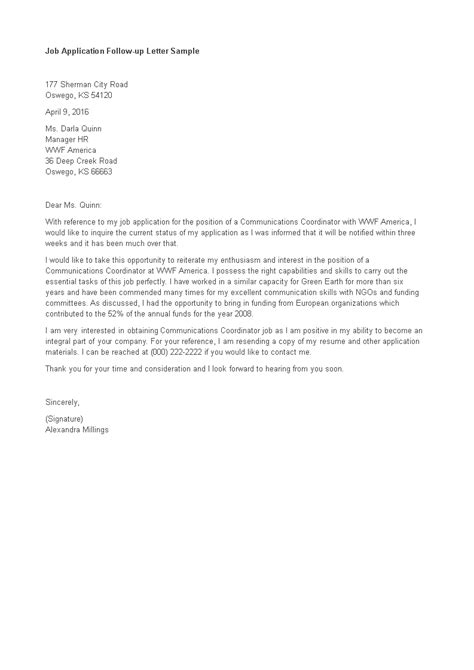Following Up On Job Applications: Essential Steps

Are you tired of submitting job applications and not hearing back from potential employers? Following up on your job applications is a crucial step in the job search process. It shows your interest and enthusiasm for the position and sets you apart from other applicants. In this article, we’ll discuss the essential steps to follow up on your job applications.
Step 1: Keep Track of Your Applications
Before you start following up on your job applications, make sure you keep track of them. Create a spreadsheet or a document where you can list the date you applied, the position applied for, and the company name. This will help you keep track of which applications you need to follow up on and when.
Step 2: Wait a Week Before Following Up
It’s important to give the employer enough time to review your application before following up. Wait at least a week before reaching out. This shows that you respect their time and process.
Step 3: Send a Follow-Up Email
The best way to follow up on your job application is via email. It’s professional and allows you to keep a record of your communication. In your email, introduce yourself, remind the employer of the position you applied for, and express your continued interest in the position.
Example Follow-Up Email:
Dear [Hiring Manager’s Name],
I hope this email finds you well. I wanted to follow up on my job application for the [Position] role at [Company Name]. I submitted my application on [Date of Application] and wanted to express my continued interest in the position.
Thank you for considering my application. I look forward to hearing back from you.
Best regards,
[Your Name]
Step 4: Follow Up Again After Two Weeks
If you don’t hear back from the employer after your initial follow-up email, don’t be discouraged. Give it another two weeks before following up again. This shows that you’re still interested in the position and gives the employer more time to review your application.
Step 5: Make a Phone Call
If you still haven’t heard back after your second follow-up email, it may be time to make a phone call. Look up the company’s phone number and ask to speak to the hiring manager. Introduce yourself and remind them of the position you applied for. Ask if they’ve had a chance to review your application and if they need any additional information from you.
Step 6: Move On
If you still don’t hear back from the employer after your phone call, it may be time to move on. Don’t take it personally. There could be a number of reasons why you weren’t selected for the position. Keep applying to other jobs and continue to improve your skills and qualifications.
Conclusion
Following up on your job applications is an essential step in the job search process. It shows your interest and enthusiasm for the position and sets you apart from other applicants. By keeping track of your applications, waiting a week before following up, sending a follow-up email, following up again after two weeks, making a phone call, and moving on, you’ll increase your chances of getting noticed by potential employers.
FAQs
1. How often should I follow up on my job application?
You should wait at least a week before following up on your job application. If you don’t hear back after your initial follow-up email, wait another two weeks before following up again.
2. Should I follow up via phone or email?
It’s best to follow up via email first. If you don’t hear back after your second follow-up email, you can make a phone call.
3. What should I include in my follow-up email?
In your follow-up email, introduce yourself, remind the employer of the position you applied for, and express your continued interest in the position.
